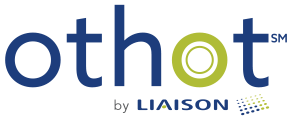We’ve all heard about the wonders of big data and the valuable insights that utilizing big data can bring. But what isn’t always clear is where all of this “big data” is coming from. Some companies are scraping the web for any piece of data they can find about their current or potential customers. Data that exists currently is extremely vast, with endless applications… but the problem is discerning what’s useful and what’s not, and while its valuable to amass any potentially useful data, what’s even more interesting is how companies are beginning to collect exactly the right data right from the source: their customers.
The problem is that collecting your own data can be costly – in both time and money; but the benefits from owning completely unique data are exponentially valuable. But, how are you going to get your customers to give you the data that you want? Many companies turn to surveys, and rewards programs, which are proving to be more and more effective as our technology-savvy society continues to challenge the bounds of privacy concerns in return for special promotions. But how many more rewards cards are you willing to carry around on your key chain only to be used (if you even remember you have it) a few times a year?
Enter gamification. In its simplest form it’s a free sandwich every ten visits at Subway. In the marketing world, it is essentially, the incorporation of game-like elements into our business and promotional strategies to keep customers engaged.
Some basic examples of these game elements include:
- Achievement: rewarding of a badge, level up, or points for reaching some accomplishment
- Leader boards: ranking individuals to create competition and induce higher involvement
- Appointments: creating a certain time at which “players” must return and complete an action to receive a reward
- Countdown: having a limited time to complete a task
- Progress: showing the amount of progress in a certain activity
For more game elements and some examples, see SCVNGR’s game mechanics playbook here.
As the winter months and prime skiing weather approaches, let’s take a look at an example of big data and data collection through gamification at work at ski resorts, which are using radio frequency identification (RFID) technology to make better informed decisions about day to day operations. The RFID technology tracks skiers throughout their day. But how do you convince a customer to allow you to track their every movement? Turn it into a game. Here’s how it works:
Skiers receive a card (think about this as your membership card, like the players’ cards at casinos, or the card you swipe at Giant Eagle to get discounts on groceries) embedded with an RFID chip. Then the flood gates are open for the ski resorts: they can use the data to create an interactive experience for the skiers – access to statistics about their day on the slopes (vertical feet skied, lift rides taken, etc.) in turn creating an opportunity for skiers to share their achievements on social media or compete with their friends and family or other skiers at resort.
Meanwhile, the resort is using each data element as a way to improve wait times, equipment rentals, other resort traffic, staffing, and marketing and predictive analytics applications—equally important as efficiency. Based on the information that the resort collects about each skier, they can better target marketing materials of specific products to those most likely to buy them. As they continue to collect data overtime, resorts are able to use the historical data to make better predictions about how many people will attend a resort on a certain day, which slopes or other amenities will be populated, and by what type of customer.
But, without the customers’ personal data, none of this would be possible, and as consumers are becoming overwhelmed with rewards programs, gamification is proving the most successful way to collect this type of data. In a broader sense, creating an opportunity for data collection to provide value to both your customers and your business.
Sources:
- http://www.datasciencecentral.com/profiles/blogs/the-7-most-unusual-applications-of-big-data-you-ve-ever-seen
- https://channels.theinnovationenterprise.com/articles/even-ski-resorts-are-benefiting-from-the-big-data-explosion
- http://www.seanogle.com/entrepreneurship/gamification
- http://techcrunch.com/2010/08/25/scvngr-game-mechanics/

Alexis Tshudy




